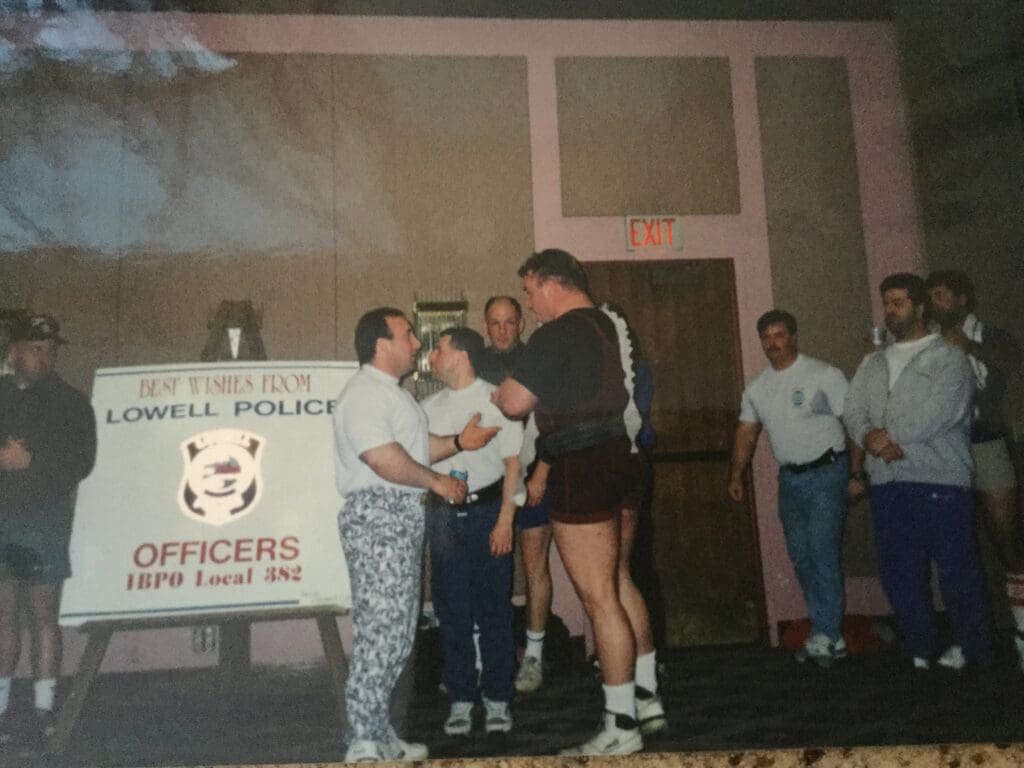1994 – My Introduction to Westside Conjugate Training
by: Paul Leonard

A quarter of a century ago, I was living in Southern California, without a decent gym or a serious training crew to seek greater strength gains. My then girlfriend had bought me the Westside Barbell tapes for Christmas 1993. As Louie Simmons has said many times, in the beginning all I had was a power rack, an AM FM radio, and the Powerlifting magazine articles of the time. I could usually find some to train max effort bench with at Powerhouse Gym in Chatsworth on Wednesdays, but no one in my life then was serious about training the squat or the deadlift. My boss at the time was in a serious midlife crisis mixed with delusional tendencies of which I was the benefactor because he purchased great equipment to train with at the office where we worked.
As the youngest guy in the office by two decades, my co-workers would clear out by 5 to the life I know all too well now, kids activities or Home Depot runs for the latest Chinese plastic piece for my house that has surprisingly broke. I would have a snack, psyche up and set up the equipment in the 400 square foot main office. My workouts soon became ten minutes of terror as I would box squat for ten or twelve doubles while I counted a minute between sets. As Louie has written, when you push your sets with little rest-you recruit dormant muscle fibers to get the job does. This lactic acid tolerance type training naturally raises your growth hormone level resulting in fat being burnt off and connective tissue being strengthened. I would squat to a below parallel preacher bench seat for my main dynamic effort squats with varied stances from close, medium, or wide.
At times I would do additional sets of squats with a very wide stance to a 10” milk crate for doubles. Remember I am 6’2” so this was quite the range of motion for my hips and entire posterior chain. Could that be why I am still training hard 25 years later? I followed Louie’s recommendations the best I could with very limited equipment after my squats. I would do bent over good mornings, primarily for triples but I recall doing a single with 405 then. Bent over rows were a staple as they are the 4th powerlift, the one assistance exercise that positively impacts the three competitive lifts. Abs were done by hooking my feet under sturdy furniture and doing sit-ups of various widths and leg raises with and without weights. Reverse hyper were accomplished by placing weights on an old leather lifting belt that I had cut to fit the hole on an Olympic plate and doing the reps off of 5 drawer safes.
I followed Lou’s advice to train Max Effort lower body with exercises I had never done before such as zercher squats, kneeling squats, pull throughs with a cable, and side bends. At this time in my lifting career, I had officially pulled 650 at 242 using traditional progressive overload training- whatever I could triple I could pull 60 pounds more in a meet. Louie’s articles and tapes introduced to his dynamic deadlift method of doing sub maximal singles with very short rest periods. This 5 week cycle called for 15 singles at 65% of actual max, 70% for 12 singles, 75% for 10 singles, 80% for 8 singles, and 85% for 6 singles. On the 6th week I would pull a either a training max or a do a meet. If no meets in sight you could deload- a concept I never knew of until the 2000s.
For my benching I would do the dynamic effort workout using 65 % of my actual raw max. Bands and chains were not known to me at that time. Lou schooled me on Dicks presses, Williams’ front plate raises, triceps roll backs, floor pressing for reps, and the importance of dumbbell pressing from different angles for hypertrophy work. Westside materials introduced me to Bradford presses, chest supported row work, and the need for heavy hammer curls that created forearms that allowed me to complete heavy powerlifts and later Strongman tasks.
In November of 1994 I decided to put my new training style to the test by doing the USPF Vandenberg AFB Open/Military Nationals. I weighed in at 260lbs and in the single ply gear of the day I went 633 407 677 for second place in the 275 lb class with my first official 1700lb total. I met Steve Dennison that day and he was a great resource who introduced me to my future training partners such as Art LaBare and Josh Bryant. My first few years in So Cal were not the lifting paradise I had envisioned when I left Massachusetts, but after 1994 my foundation was solidly laid and the best lifting years of my life were ahead.
Take always from this article should be:
- After 8 years of traditional progressive overload, the Conjugate style of training gave me a huge boost in competitive strength after following it for a year.
- Dynamic effort training was a new concept for me but I followed Louie’s guidelines and the %s and volume put me in great strength athlete shape. I lost body fat and built muscle mass.
- Focusing on weak points in my lifts and muscular skeletal system worked very well for me.
- Without regular training partners like I left in Massachusetts, I was able to improve all on my own.
- Training Conjugate was/is fun. As Louie says: You are always beating the weights so you don’t walk around like your best friend died. There was no mental drudgery with training.
